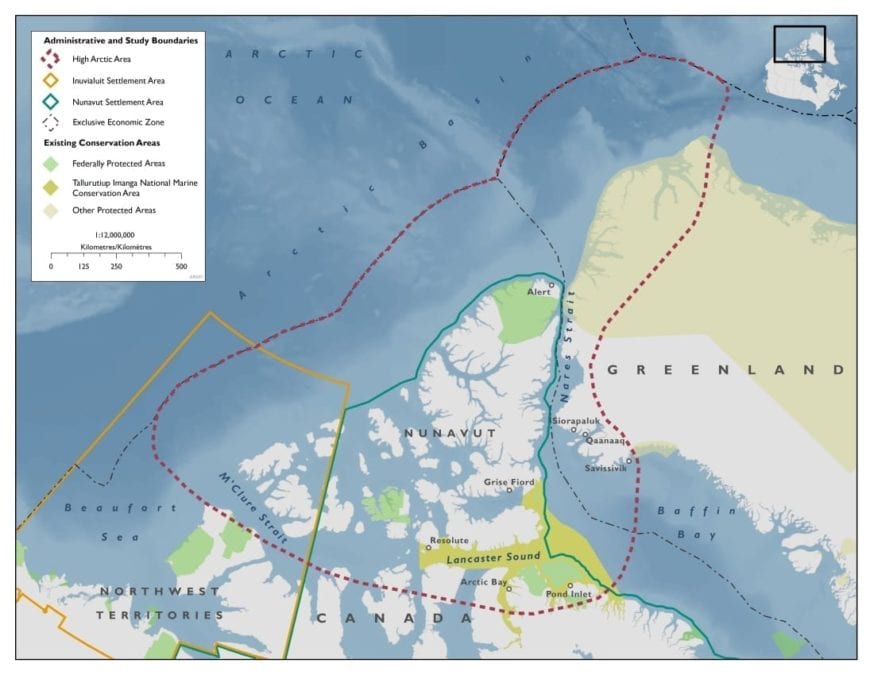The Qikitani Inuit Association (QIA), together with the governments of Canada and Nunavut, have agreed to look at protecting portions of Tuvaijuittuq.
Tuvaijuittuq means 'the ice never melts' in Inuktitut and refers to an area also known as Canada's High Arctic Basin.

photo courtesy Department of Fisheries and Oceans
"A recent report by Canadian scientists made it clear that the sea ice that has defined our far north or Inuit Nunangat is disappearing," stated the April 12 QIA news release, which adds that by mid-century it is expected that the last place with summer sea ice will be in the Tuvaijuittuq area.
"Climate change, human pollution, increased development and exploration, as well as shipping, have contributed to unprecedented changes in the Arctic, which may have serious implications for marine biodiversity and Northern communities."
QIA and the governments signed a memorandum of understanding.
"The partnership that has been struck between the Qikiqtani Inuit Association, the Government of Nunavut and the Government of Canada will advance the protection of Tuvaijuittuq, and will not only explore the possible preservation of a pristine marine ecosystem for generations to come but also the creation of tangible benefits for Inuit who live in communities such as Grise Fiord in the High Arctic – benefits like conservation-related jobs, Inuit-led research initiatives, marine infrastructure and economic opportunities in sustainable industries such as fisheries," stated QIA president P.J. Akeeagok.
The federal government announced its commitment to exploring the potential creation of marine protected areas in Tuvaijuittuq in its 2019 budget, though they agreed to consider such options in October 2018 when the agreement in principle for a future Inuit Impact Benefit Agreement for the Tallurutiup Imanga National Marine Conservation Area was signed.
The feds have previously designated several marine protected areas in Inuit Nunangat, including Anguniaqvia niqiqyuam and Tarium Niryutait Marine Protected Areas in the Northwest Territories and Ninginganiq, Akpait, Qaqulluit and Nirjutiqavvik National Wildlife Areas in Nunavut, according to the release.
Tuvaijuittuq is unique due to the presence of year-round pack ice that provides important habitat to ice-dependent and culturally significant species on which Inuit communities depend, such as polar bears, walruses, and seals, the release states.
The communities of Grise Fiord, Resolute, Arctic Bay and Pond Inlet all fall within the boundary of Tuvaijuittuq, according to a Department of Fisheries and Oceans map.
As part of the Tuvaijuittuq process, social, environmental, and economic benefits of creating marine protected areas in the region will be looked at, with full consideration to the Nunavut Agreement and the Nunavut Act.
"The iconic natural landscapes of Canada are what define us and, if we don’t step up to protect them now, it may be too late. The Government of Canada is committed to doubling the amount of nature protected in Canada's lands and oceans, from coast to coast to coast," stated Minister of Environment and Climate Change and Minister responsible for Parks Canada Catherine McKenna.
"We are pleased to be working with the Government of Nunavut and the Qikiqtani Inuit Association to expand Canada’s network of protected areas and protect biodiversity, while supporting economic benefits for Inuit and ensuring that traditional activities continue for generations to come."